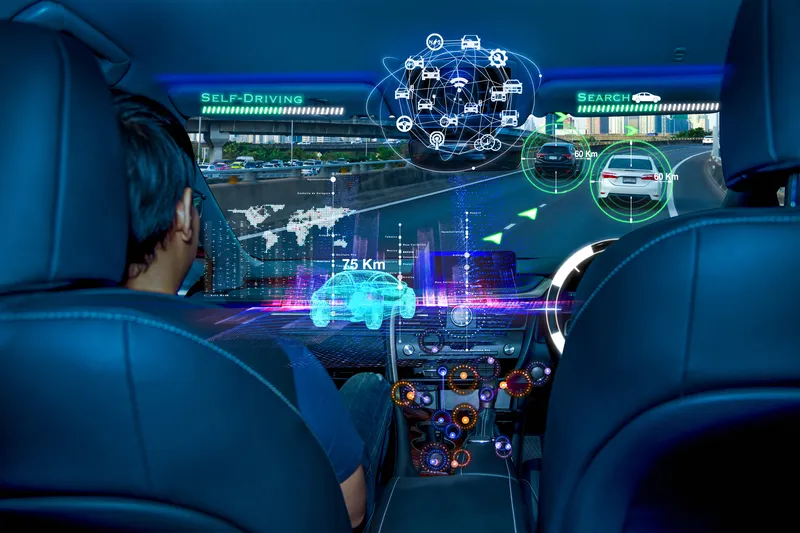A new report released today by The Economist Intelligence Unit (The EIU) highlights that the huge investment already going into research and development for connected vehicles is reaping rewards. However, several obstacles still remain – from privacy and security concerns, to a lack of infrastructure, the need for a legislative framework, issues around congestion and pollution and the very real threat from on-demand transport disruptors such as Uber and Lyft.
Matt Kendall, telecoms analyst at The EIU, sa
October 19, 2016
Read time: 3 mins
A new report released today by The Economist Intelligence Unit (The EIU) highlights that the huge investment already going into research and development for connected vehicles is reaping rewards. However, several obstacles still remain – from privacy and security concerns, to a lack of infrastructure, the need for a legislative framework, issues around congestion and pollution and the very real threat from on-demand transport disruptors such as 8336 Uber and Lyft.
Matt Kendall, telecoms analyst at The EIU, said: "In many respects, connected cars are already an embedded part of the current motoring environment, with many vehicles on our roads utilising connectedness in the form of GPS, infotainment and on-board vehicle diagnostics. However, the end game for the use of connectedness is the self-driving car, which is able to use connectivity to manoeuvre around, and interact with, its environment. But many obstacles to a fully autonomous future remain, and both the tech and auto industries are going to have to work hard, in a spirit of collaboration, to overcome them."
Connected cars are already generating huge amounts of data through on-board infotainment systems, as well as software platforms such as Google's Android Auto and Apple's CarPlay systems, which allow smartphone tethering to a vehicle. This is the current interpretation of connectedness within the automotive sector, but it is really self-driving vehicles that both carmakers and tech companies are focusing on over the long term.
But there are obstacles in the way. Firstly, autonomous vehicles will have to co-exist with driver-powered cars for some time, and they will have to be sophisticated enough to deal with pedestrians, cyclists, road furniture and other drivers.
There are ethical implications too; it is inevitable that autonomous vehicles will be involved in accidents in the future, and the decision-making patterns that a self-driving car may use to avoid them are complex. Governments will have to take a lead on developing a legislative framework within which autonomous cars can co-exist with both people and people-powered vehicles.
A more straightforward barrier is technological infrastructure. With the potential for millions of cars to generate huge amounts of data, both telecoms companies and governments will have to work to free up spectrum and develop greater network capacity. And with market disruptors such as Uber and Lyft working hard to eliminate the need for car ownership and deliver an on-demand service accessible to greater numbers of people, the demand for data, and the threat to carmakers, becomes even more apparent.
Nonetheless, connected cars are here to stay. Carmakers, tech companies and governments alike are embracing the transformative implications of having more connected cars and eventually, autonomous cars on the roads. The gains are potentially enormous and hint at the role autonomy could play in shaping travel and the very fabric of urban environments in a radically different way.
Matt Kendall, telecoms analyst at The EIU, said: "In many respects, connected cars are already an embedded part of the current motoring environment, with many vehicles on our roads utilising connectedness in the form of GPS, infotainment and on-board vehicle diagnostics. However, the end game for the use of connectedness is the self-driving car, which is able to use connectivity to manoeuvre around, and interact with, its environment. But many obstacles to a fully autonomous future remain, and both the tech and auto industries are going to have to work hard, in a spirit of collaboration, to overcome them."
Connected cars are already generating huge amounts of data through on-board infotainment systems, as well as software platforms such as Google's Android Auto and Apple's CarPlay systems, which allow smartphone tethering to a vehicle. This is the current interpretation of connectedness within the automotive sector, but it is really self-driving vehicles that both carmakers and tech companies are focusing on over the long term.
But there are obstacles in the way. Firstly, autonomous vehicles will have to co-exist with driver-powered cars for some time, and they will have to be sophisticated enough to deal with pedestrians, cyclists, road furniture and other drivers.
There are ethical implications too; it is inevitable that autonomous vehicles will be involved in accidents in the future, and the decision-making patterns that a self-driving car may use to avoid them are complex. Governments will have to take a lead on developing a legislative framework within which autonomous cars can co-exist with both people and people-powered vehicles.
A more straightforward barrier is technological infrastructure. With the potential for millions of cars to generate huge amounts of data, both telecoms companies and governments will have to work to free up spectrum and develop greater network capacity. And with market disruptors such as Uber and Lyft working hard to eliminate the need for car ownership and deliver an on-demand service accessible to greater numbers of people, the demand for data, and the threat to carmakers, becomes even more apparent.
Nonetheless, connected cars are here to stay. Carmakers, tech companies and governments alike are embracing the transformative implications of having more connected cars and eventually, autonomous cars on the roads. The gains are potentially enormous and hint at the role autonomy could play in shaping travel and the very fabric of urban environments in a radically different way.










